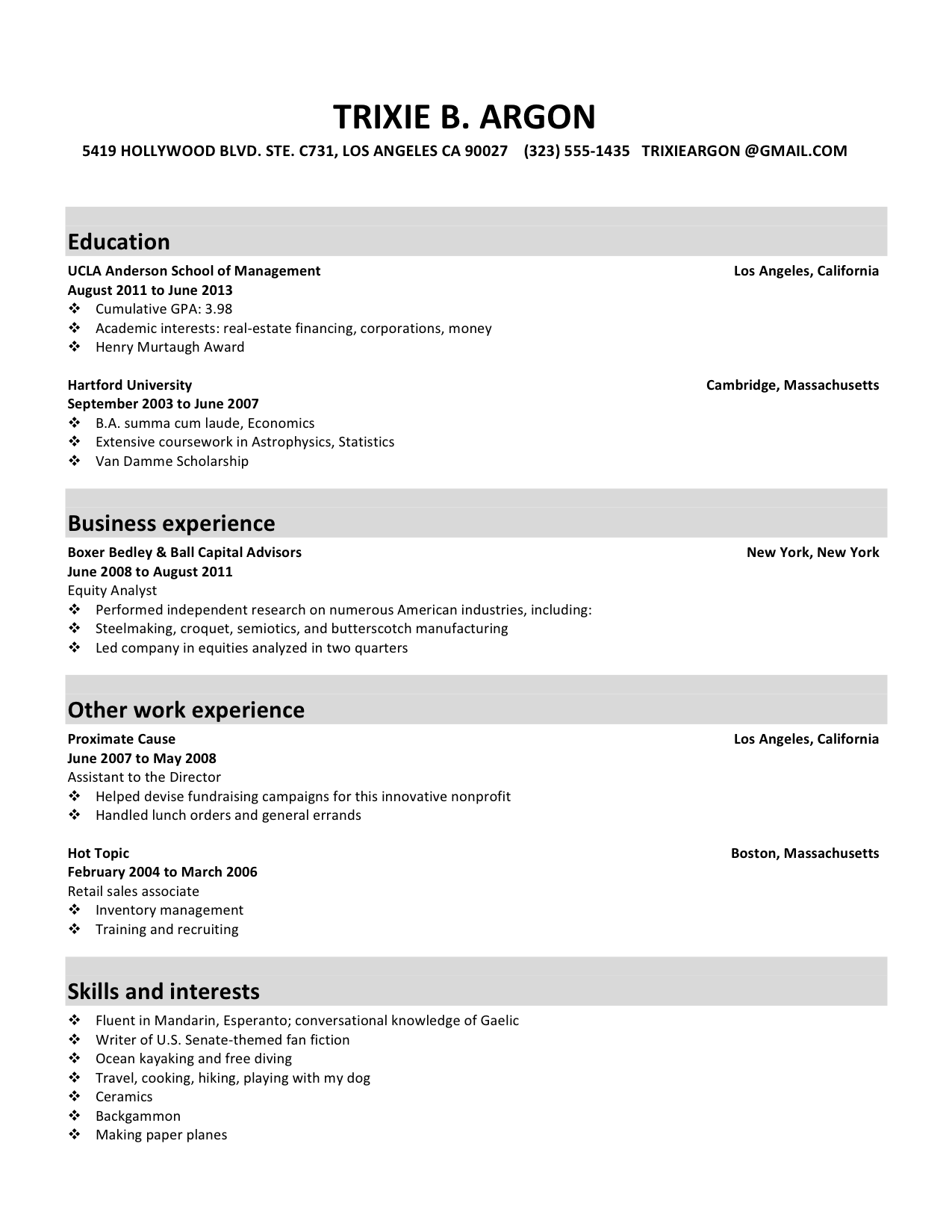During law school, I interviewed for a job at a small firm. One of the hiring partner’s first comments was
I got the job. There were surely better-qualified candidates. But they damaged their chances with sloppy résumés.
This is a book on typography, not typos. But the point is the same—faced with a stack of nearly identical résumés and limited time, readers will make judgments that aren’t based on substance. Whether you think that’s fair is irrelevant. It happens all the time.
The biggest problem I see with résumés is that they’re uncomfortably dense with text. I take this to be the influence of the myth that a résumé can only be one page long. Unless a potential employer demands one page, feel free to make your résumé longer, if necessary. This will ease your typographic problems.
Two caveats, however. Don’t assume a reader will get past the first page—put the most important information up front. And when I say
Page margins too small; line length too long.
All text set in Calibri (a system font).Headings and gray boxes are too large relative to body text.
Key information—the where and when—is buried.
Ugly bulleted lists.Too much information on one page.
Page margins bigger; line length smaller.
Equity and Concourse instead of Calibri.Headings are smaller and lighter.
Names of schools and employers are larger.
Gentler list bullets.Nonessential information moved to second page.
Keep in mind that one way a résumé illustrates your virtues is by drawing connections between you—whom the reader knows nothing about—and various schools and employers, which the reader may have heard of. The implied syllogism goes like this: Boxer Bedley & Ball is an elite firm. This person worked at Boxer Bedley & Ball. Therefore, this person is an elite lawyer. Don’t make your reader struggle to dig out the names of those schools and employers—make sure they’re immediately visible.
In this revision, the visual emphasis has shifted from the headings—who cares about résumé headings?—to the substance. This also makes the résumé more skimmable, which is always a good thing.
I treat a résumé as a special kind of laser-printed letterhead. Review those production tips.
Past that, resist the urge to buy paper specially marketed for résumés—the kinds that come in odd colors (e.g., green, pink, gray) or textures (e.g., parchment, marble, linen). High-quality business-letterhead paper from the stationery store works best. Anything more elaborate looks overbaked.
Increasingly, employers and recruiters are asking for résumés in PDF format. In PDF, good typography survives; good paper is irrelevant.

